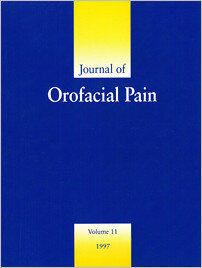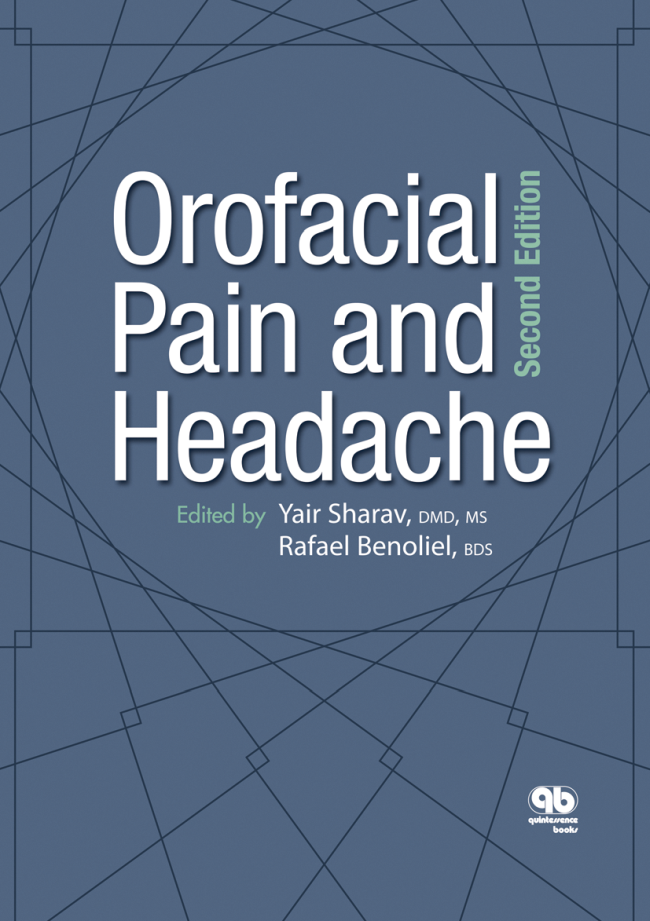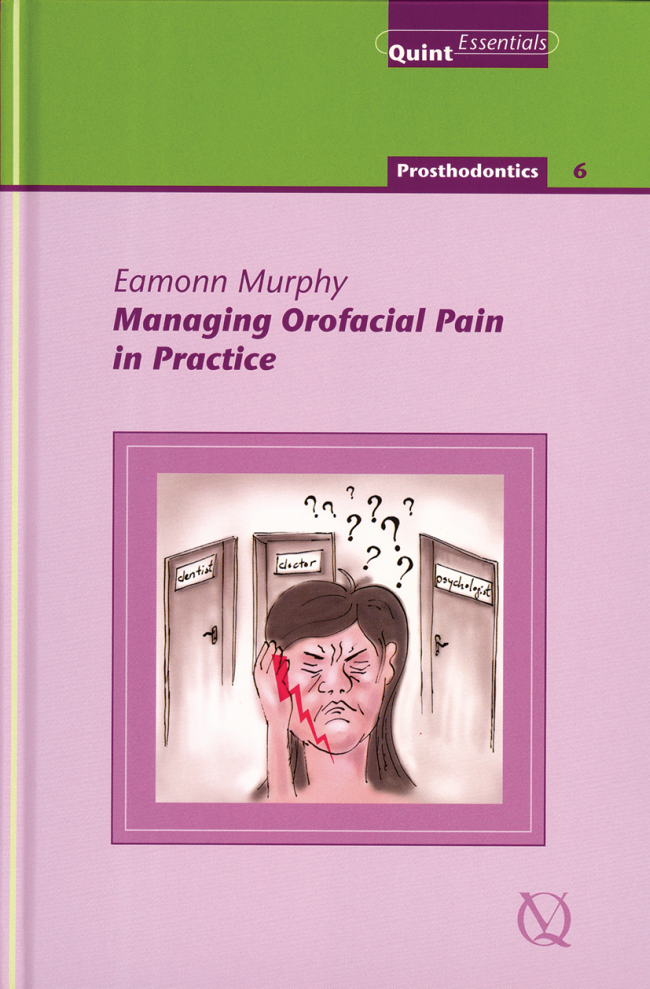Seiten: 5-6, Sprache: EnglischSessle, Barry J.Seiten: 9-19, Sprache: EnglischOrchardson, Robert / Gillam, David G.Formulations containing potassium salts (eg, chloride, nitrate, citrate, oxalate) are widely used for treating dentin hypersensitivity (DH). The purpose of this review was to evaluate evidence for the clinical efficacy of potassium salts in reducing DH and also to consider the biologic basis for any effects. Literature searches were used to identify reports of clinical trials of potassium-containing preparations. Searches revealed 3 trials of potassium nitrate solutions or gels; 2 trials of mouthwashes containing potassium nitrate or citrate; 6 trials of potassium oxalates; and 16 double-blind randomized trials of toothpastes containing potassium nitrate, chloride, or citrate. The toothpaste studies provided quantitative data on treatment effects. These outcome measures were expressed as percentage reductions in sensitivity to cold air and mechanical stimulation and the patients' subjective reports. Trials of topically applied solutions yielded inconsistent results. Potassium-containing mouthwashes produced significant reductions in sensitivity. All potassium-containing toothpastes produced a significant reduction in sensitivity to tactile and air stimuli, as well as subjectively reported sensitivity. In most studies, the active agent (potassium) was superior to the minus-active control (placebo), but a few of the more recent trials have demonstrated significant placebo effects. It is postulated that potassium ions released from toothpastes diffuse along the dentinal tubules to inactivate intradental nerves. However, this principle has never been confirmed in intact human teeth. The mechanism of the desensitizing effects of potassium-containing toothpastes remains uncertain at present.
Seiten: 20-30, Sprache: EnglischKanyama, Manabu / Kuboki, Takuo / Kojima, Shunji / Fujisawa, Takuo / Hattori, Takako / Takigawa, Masaharu / Yamashita, AtsushiAims: Imbalance between matrix metalloproteinases (MMPs) and their inhibitors (TIMPs) may be involved in the breakdown of articular cartilage matrix of the temporomandibular joint (TMJ). In this study, MMPs, TIMPs, and MMP-1/TIMP-1 complex levels were examined in TMJ synovial fluid samples aspirated from TMJ osteoarthritis (OA) patients (2 males, 8 females; mean age, 29.7 years) and asymptomatic control subjects (2 males, 8 females; mean age, 23.6 years) to determine the likelihood of increased proteolytic activity in the OA joints. Methods: The various types of MMPs and TIMPs were detected by Western blotting with monoclonal antibodies and gelatin zymography. The MMP-1/TIMP-1 complex level was measured by an enzyme-linked immunosorbent assay kit. All aspirates were first analyzed for total protein content and then individually diluted to make the total protein levels equivalent. Results: The mean MMP-1/TIMP-1 complex concentration in the synovial fluids of the OA patients was 3.92 ± 1.39 ng/mL; this value was significantly lower (P 0.05) than the value from control subjects (5.46 ± 1.32 ng/mL). Matrix metalloproteinase-1 (52 kDa), MMP-3 (57 kDa), TIMP-1 (28 kDa), and TIMP-2 (26 kDa) were detected in all of the normal and the OA samples. However, MMP-1 (28 kDa), MMP-2 (72 kDa), MMP-3 (45 kDa), and MMP-9 (83 kDa) were detected in higher concentration in the OA samples. Conclusion: These findings suggest a strong association between the OA-active joints and the presence of biologically active forms of known tissue degradation enzymes (MMP-1, MMP-3, and MMP-9).
Seiten: 31-36, Sprache: EnglischWinocur, Ephraim / Gavish, Anat / Halachmi, Michele / Eli, Ilana / Gazit, EstherAims: To determine the effectiveness of topical capsaicin cream application on localized pain in the temporomandibular joint (TMJ) area. Methods: A randomized, double-blind, placebo-controlled study was conducted on 30 patients suffering from unilateral pain in the TMJ area. Patients were randomly divided into experimental and placebo groups; they were instructed to apply 0.025% capsaicin cream or its vehicle to the painful TMJ area 4 times daily for 4 weeks. Subjective parameters of present pain, most severe pain, effect of pain on daily activities, and pain relief were assessed each week on a visual analog scale. Muscle and joint sensitivity to palpation on the painful and contralateral joints and maximal mouth opening (assisted/passive and non-assisted/active) were examined weekly by the same experienced examiner. Results: Capsaicin cream produced no statistically significant influence on measured variables when compared to placebo. Both experimental and placebo groups showed statistically significant improvement in most variables during the experiment. Conclusion: The factor of time had a major effect in the non-specific improvement of the parameters assessed. The placebo effect played an important role in the treatment of patients with pain in the TMJ area.
Seiten: 37-46, Sprache: EnglischErnberg, Malin / Voog, Ulle / Alstergren, Per / Lundeberg, Thomas / Kopp, SigvardAims: Serum serotonin levels (S-5-HT) have been reported to be reduced in patients with fibromyalgia and to show a negative correlation with pain. We hypothesized that one mechanism behind this could be that platelets are activated to release 5-HT into the plasma compartment (P-5-HT), which then binds to nociceptors. The aims of this study were therefore to investigate the relation between P-5-HT and S-5-HT and their relationship versus orofacial pain and anxiety in fibromyalgia. Methods: Twelve patients with fibromyalgia, 12 patients with rheumatoid arthritis, and 12 healthy individuals participated in the study. Pain measures used were pain intensity assessed with a visual analog scale, pain drawings, and influence of pain on daily living activities (ADL). The Spielberger State and Trait Anxiety Inventory (STAI) scale was used for self-rating of anxiety levels. The participants were examined clinically, and the pressure pain threshold (PPT) over the masseter muscle was assessed. Finally, venous blood was collected for analysis of P-5-HT and S-5-HT. Results: The ratio between P-5-HT and S-5-HT was calculated to determine the relative plasma fraction of serotonin (RPS). Patients with fibromyalgia showed significantly lower S-5-HT than did patients with rheumatoid arthritis. They also showed significantly higher STAI scores and tender point index of orofacial muscles and significantly lower PPT than the healthy individuals. High RPS was associated with high ADL and STAI scores. Conclusion: This study indicates that a high level of plasma serotonin in relation to serum level is associated with pain discomfort and increased anxiety in fibromyalgia.
Seiten: 47-51, Sprache: EnglischTurp, Jens C. / Kowalski, Charles J. / Stohler, Christian S.Aims: To determine the degree to which the generic pain intensity rating (ie, overall and without reference to a particular body site) of facial pain patients being seen in a specialty setting for facial pain is influenced by painful comorbidity in body parts other than the face. Methods: In this prospective study, 40 consecutive female temporomandibular pain patients rated their generic pain on a 100-mm visual analog scale. After marking all painful body sites on pain drawings, patients were asked to rate the pain intensity for each of the indicated pain sites; the patients did not have access to the generic pain intensity score. Pearson's correlation coefficient was used to correlate the generic pain intensity score with site-specific pain intensity ratings, their mean and maximum, and the number of pain sites. Results: The medians of the generic, maximum, and facial pain intensity scores were 49.5, 53, and 45.5, respectively. The generic pain intensity rating correlated more highly with the intensity scores reported for the most painful body site (r2 = 0.82; P 0.001) than with the average rating across all painful sites (r2 = 0.62; P 0.001), or the pain intensity score in the face (r2 = 0.61; P 0.001). The number of pain sites did not correlate to any statistically significant degree with the generic pain intensity rating (r2 = 0.006; P = 0.65). Conclusion: The results of this study suggest that the maximum visual analog scale pain intensity score, observed in any body location, is a better reflection of the generic pain intensity rating than the corresponding score of the face. To avoid overrating or underrating of facial pain intensity, patients should be instructed to provide site-specific pain intensity scores if painful comorbidity is present.
Seiten: 52-58, Sprache: EnglischMongini, Franco / Ciccone, Giovannino / Ibertis, Francesca / Negro, CesareAims: Patients with different facial pain/headache pathologies usually complain of numerous accompanying symptoms relative to systemic dysfunctions or to the patient's personality characteristics. The purpose of this work was: (1) to determine the prevalence of accompanying symptoms in groups of patients with temporomandibular joint (TMJ) dysfunction and other types of facial pain or headache disorders, (2) to assess the patients' personality characteristics and anxiety levels, and (3) to see whether significant differences were found between the groups. Methods: Two hundred forty-three patients were considered. They had TMJ intracapsular disorder (TMJ, n = 71), tension-type headache (TH, n = 52), migraine (M, n = 68), chronic daily headache (CDH, n = 26), or facial pain disorder as somatoform disorder (FP, n = 26). The presence of 23 symptoms was assessed; the Minnesota Multiphasic Personality Inventory (MMPI) and the Spielberger State and Trait Anxiety Inventory (STAI) were administered and the relative scores were calculated. Four different MMPI clusters (depressive, conversive, emotional, coper) were also considered. Intergroup differences were assessed by Chi-square analysis, 1-way analysis of variance, Bonferroni t test, and a logistic regression model and then standardized for gender and age, taking the tension-type headache group as a common reference group. Results: The TMJ group had: (1) a lower prevalence of almost all symptoms; (2) significantly lower scores of several MMPI and of state anxiety; and (3) odds ratio values 1 for all symptoms except phobias and for emotional, conversive, and depressive MMPI profiles. The FP and CDH groups had the highest prevalence of the majority of symptoms and higher MMPI and STAI scale elevations. Conclusion: It is concluded that some types of headache and facial pain seem to correlate with the presence of a number of accompanying symptoms and with some changes in personality. These changes are particularly relevant in patients with chronic daily headache and facial pain disorder. In contrast, patients with TMJ intracapsular disorders tended to show a low prevalence of accompanying symptoms and a normal personality profile.
Seiten: 59-64, Sprache: EnglischCarlson, Charles R. / Miller, Craig S. / Reid, Kevin I.Aims: Burning mouth syndrome (BMS) is estimated to affect 1 to 5% of the adult population, with women experiencing symptoms more frequently than men. The purpose of this study was to examine the psychosocial profiles of BMS patients to determine whether psychologic factors are related to pain reports. Based on previous literature, it was hypothesized that patients with BMS would be characterized by clinical elevations on standardized psychologic assessment instruments that included the Revised Symptom Checklist (SCL-90R) and the Multidimensional Pain Inventory (MPI). Methods: Thirty-three BMS patients completed the McGill Pain Questionnaire, MPI, and SCL-90R during their initial clinical evaluation session. The SCL-90R and MPI data were then summarized and presented in standardized format (T-scores) to enable meaningful comparisons with larger population samples that included both a chronic pain population and a normal non-clinical sample. Results: The T-score for the overall pain severity on the MPI was 40.8 (SD 12.8). For the entire BMS sample, there was no evidence for significant clinical elevations on any of the SCL-90R subscales, including depression, anxiety, and somatization. Moreover, patients reported significantly fewer disruptions in normal activities as a result of their oral burning pain than did a large sample of chronic pain patients. Conclusion: These findings indicate that, as a group, this sample of BMS patients did not report significant psychologic distress. There were, however, individual cases (7 of 33, or 21%) where psychometric data indicated a likelihood of psychologic distress, and further evaluation by a competent health professional would be warranted for those individuals.
Seiten: 65-73, Sprache: EnglischChen, Yunn-Jy / Gallo, Luigi M. / Meier, Dieter / SanPallaAims: Echo planar imaging (EPI) is an ultrafast magnetic resonance imaging (MRI) technique that can scan a single frame in less than a second. The aim of this study was to use the EPI technique to develop a new dynamic MRI protocol for the temporomandibular joint (TMJ). Methods: Basic fast-field echo and EPI pulse sequences were used for dynamic studies of the TMJ. The subjects were instructed to perform spontaneous, continuous, slow opening/closing movements without visual or audio feedback. Different scanning parameter settings were explored to optimize the results. Results: With an opening/closing movement of approximately 6 to 7 seconds per cycle, the proposed protocol yielded a good insight into the relative motion between condyle and disc. It was also possible to see the deformation of the disc during movement. Conclusion: The EPI technique is a non-invasive technique that can be used for dynamic imaging study of a slow but continuous, uninterrupted jaw movement.
Seiten: 74-75, Sprache: EnglischSeiten: 76, Sprache: Englisch 








